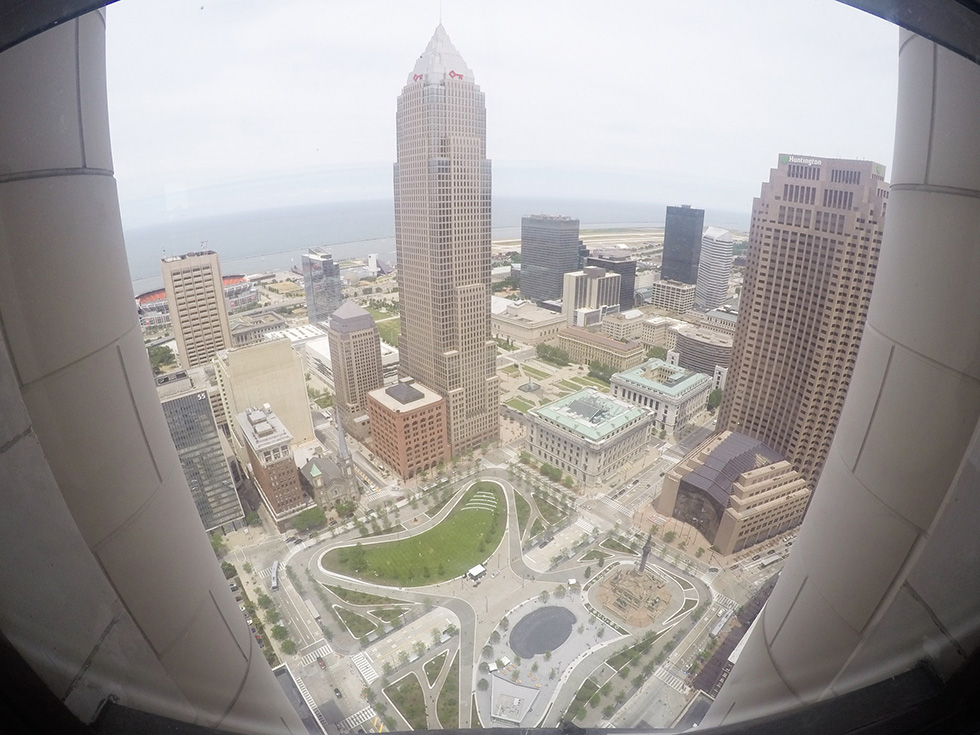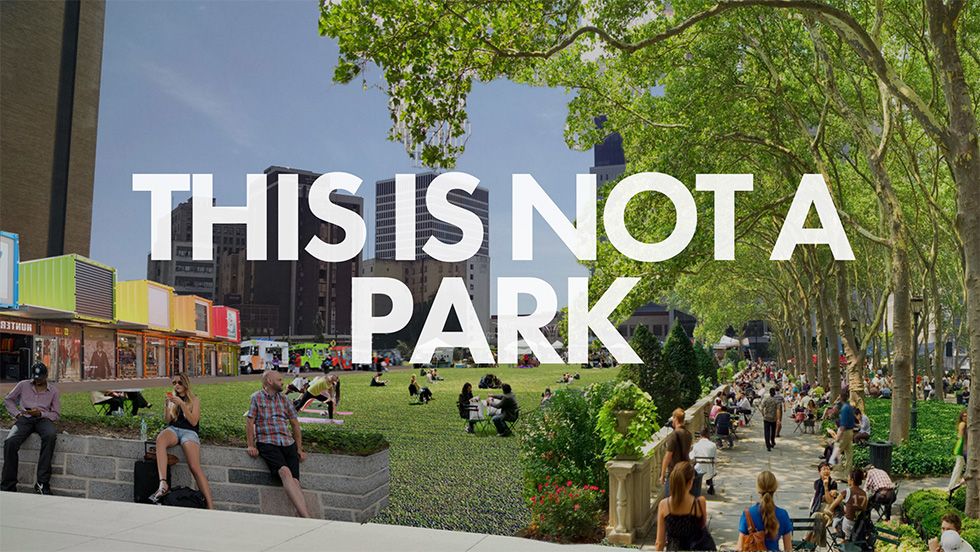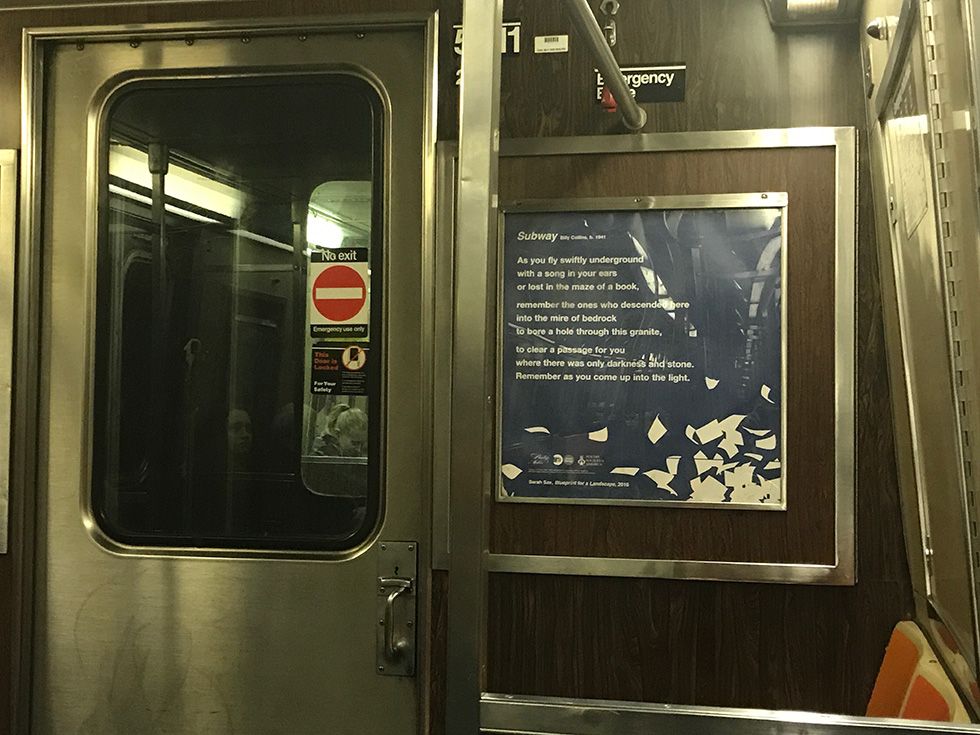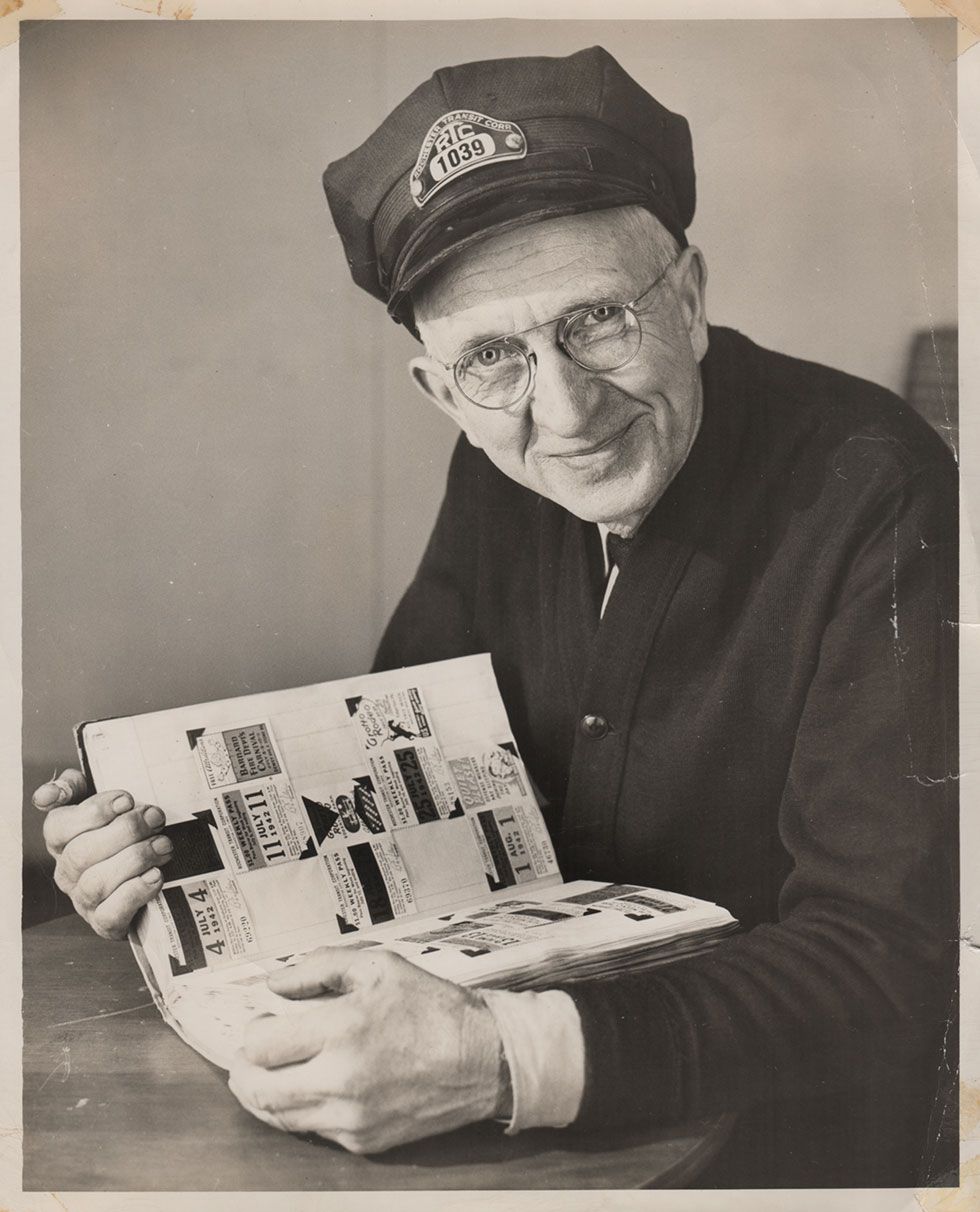This article was scraped from Rochester Subway. This is a blog about Rochester history and urbanism has not been published since 2017. The current owners are now publishing link spam which made me want to preserve this history.. The original article was published August 29, 2016 and can be found here.
![2008 Conceptual plan for Midtown by the City of Rochester [PHOTO: City Hall Photo Lab Contemporary Collection]](https://senseofplace.dev/topics/wp-content/uploads/Original_Conceptual_Plan.jpg)
Welcome back, readers! In this edition of Filling In, let's take another look at Parcel 5. Before we get started, quickly refresh by scouting the last time we discussed this site. I apologize in advance that this article probably isn't going to cover much more about what I think should be done with the site, rather, what should probably not be done, and why...

Ok, let's address the elephant in the room - Rochester Visionary Square

a.k.a This Is Not A Park.
Before we go on, I think it's important to point out that I also do not support a single-use performing arts center or a casino on this site. Additionally, I am not submitting a proposal of my own for the site, and have no vested interest in anyone who is.
And with that out of the way, much of the remainder of the few hundred words I'm about to spill regard why a park here is probably not a good idea and why housing probably is...
1. Rochester has plenty of parks
![Rochester Zoning [PHOTO: City of Rochester]](https://senseofplace.dev/topics/wp-content/uploads/Rochester_Zoning_Map.jpg)
Over 17% of the city of Rochester is open space. The only single use in the city that accounts for more of its land area is Low Density Residential (at over 41%). This 17% translates to 4030 acres of open space, which means Rochester has 0.019 acres of open space per citizen. You might be surprised to learn that this is almost 2.5x the amount of parkland recommended per citizen by the National Recreation and Park Association

(and yes, I acknowledge that a parks advocacy group might not be the most trustworthy place to get a recommended parkland per capita number, but can we agree that the actual number could only be lower than they'd suggest?). I've frequently heard the argument that this park space isn't downtown, but elsewhere in the city. Sure, but is anyone planning on redeveloping some of the parkland that isn't downtown if we add park space at Midtown? How's that

working out? If Visionary Square isn't park space at all, which I've also heard, then why does it matter to this project if downtown is under-parked or not?
2. Midtown already has a park
![Midtown Commons. Rochester, NY. [PHOTO: Jim Mayer]](https://senseofplace.dev/content/images/photos/midtown-commons-rochester.jpg)

has already been invested in and built at the Midtown site. I've seen all kinds of strange numbers given for the size of Midtown Commons, but a simple measurement shows it as about 100' x 400' including Cortland Street through it. That's right around 1 acre. And 1 acre is actually quite large. In case you're curious, fire code dictates 7 sf per person. That means Midtown Commons could accommodate 5,700+ people. Is this not already enough space? That's almost 3% of the population of the entire city. All of this isn't including the addition of the much-under-loved Site 6 to the Commons (a move I also disapprove of , but seems likely). Ignoring that, the south fifth or so of Parcel 5 is above the underground garage and not entirely suitable to be developed over. Any developer on a budget is likely to set this aside as open space, which would also add to Midtown Commons. I don't see a problem with this plan, but I also don't see this as a mandate for more open space, just a pragmatic move by any proposers.
3. Midtown isn't set up for a square
![Midtown from the Construction Cam [PHOTO: City of Rochester]](https://senseofplace.dev/topics/wp-content/uploads/Midtown_Construction_View.jpg)
Quick, name some of the top urban square spaces in the US. If you named Rittenhouse Square and Bryant Park, congrats, you've thought of the same two cherry-picked examples of great urban square spaces I did. If you thought of Millennium Park in Chicago, slap yourself - Michigan Ave is over 6 lanes wide. Ok, with that out of the way, it's obvious that Midtown, and Parcel 5 in particular, is nothing like them. First, Bryant Park and Rittenhouse Square have many thousands more people than Midtown living immediately around them (Bryant Park is, unfortunately, not conducive to getting a number of immediate residents - just look at what the 10018 zipcode

covers. But Rittenhouse Square is much more firmly within the 19103 zipcode

, which had 24,400 residents in it as of 2014). Second, each of them has at least 3 sides completely activated by ground floor retail (The back of the NYPL is of questionable activation status.). You might be surprised to learn, then, that only one side of Parcel 5 might have ground floor retail, and that's across Main Street at Sibley. To the south of the site is another park (see point 2). To the west is office space (Windstream). While to the east is the open air plaza of One East. Great

urban spaces in other cities are great

, because they are active all the way around. There is no plan for this at Midtown, and it's not clear when that could ever change with the current built environment.
4. Downtown's existing parks are under-loved
![Washington Square Park. Rochester, NY. [PHOTO: Google Maps]](https://senseofplace.dev/content/images/photos/washington-square-park-rochester.jpg)
Building more park space, while continuing to neglect the existing parks is a recipe for failure. No one is going to get on board with building new housing on top of the site of Washington Square Park, or Genesee Crossroads Park, or MLK Park, so we will be building more park space for the same number of residents who already aren't much using the existing park space. To repeat, there is already too much park space (see points 1 and 2) in Rochester. Further, any new park space is going to lack the mature tree cover of a park like Washington Square, which could just use someone actually planning events for the park to be better. Going even further still, any new park isn't going to have the pedigree of having been designed by one of America's greatest modern landscape architects - Lawrence Halprin

. A thoughtful refresh of MLK park could leave Rochester with a monument on the order of our only Frank Lloyd Wright House

. Or we could scrap it to great dismay

like Halprin's Skyline Park in Denver. I contend that if all of the effort of building a new park and programming it were put into just caring for and programming our existing parks, the gains could be larger than chasing the next big thing.
5. Midtown doesn't need more commercial space
![Main Street, Rochester NY. [PHOTO: Google Maps]](https://senseofplace.dev/content/images/photos/vacant-mccrorys-store-rochester.jpg)
Strictly speaking, the Visionary Square proposal for Parcel 5 isn't a park. That's because it has commercial space. But Midtown has a 45% vacancy rate

of its commercial space (and downtown 12.4%). That's for all commercial space (both office and retail), but I suspect just retail is even higher still. For all of downtown, there's 1.3 million sf of vacant commercial space. In case you're curious, that's enough space for every Target

in Monroe county to move downtown and still have space for 3 more. And while the plan is to assist small businesses in the new space, I'm not clear on why this same level of care and assistance can't be proffered in existing space. I doubt Buckingham really wants to own tens of thousands of square feet of vacant commercial space. I further contend that if all this effort instead were put towards negotiating a master lease agreement with the City of Rochester, not so dissimilar to the Roosevelt Island Operating Corporation one

, then we could fill space that would really make a difference downtown instead of adding more.
6. Downtown needs more residents
I'm sure you've all heard about the massive population growth downtown. Why, Rochester's downtown population is now over 6,000 strong! And this is unarguably so. But the average citizens per full-service grocery store in the US is 8,456

. So downtown isn't up to one grocery store yet, let alone a second one after Hart's. On top of that, vacancy in downtown rental units

is a mere 3.7%. For reference, Seattle, a market no one sneezes at, has a vacancy rate

of 4.3%. But what about NEW apartments, you say? Like, from AFTER the now-ancient 2014 report? Well, the biggest building to open was Tower280, and it is 90% rented at an eye-popping (for Rochester) $2 per sf in less than a few months. Demand isn't yet satiated. Downtown Rochester could handle hundreds of new units without impacting rents. Even new build units ($2 per sf will support elevators, for crying out loud) are doable at this price.
7. Downtown needs more vibrancy
I have heard a new park would provide vibrancy, but it's not clear why. Yes, there is plenty of research and all manner of writing about how parks raise property values, what makes great public spaces, and all manner of success in cities that are far denser than Rochester with much less park space per capita overall. But it's not even clear who would benefit from raising property values downtown. According to the 2014 market report, there are only 135 units of owner occupied housing in all of downtown. The rest of it is rentals. If Buckingham wants to raise their property values, why don't they buy parcel 5 at market rate from the city and build a park there? Is the whole city to subsidize the 135 private downtown owners by giving valuable downtown land away to a non-profit? If the idea is that people from outside the city will come in regularly, suburbanites have already proven unwilling to drive downtown to work or to shop, and they have plenty of unused parks out in the 'burbs too. But even if they WOULD drive to said park, they could never provide the vibrancy of people living near a park. And surprise, not enough people live near Midtown yet (see point 6). And they never will if a huge part of downtown becomes a park. This will yield only a slightly less dead space than a surface parking lot (The F block gets activated to much acclaim a few times a year - is this a good excuse for UofR not to develop it?).

I could go on about how I don't think the concept of Visionary Square is being budgeted in the way it is being compared ( Public Square

in Cleveland at $5m per acre, or Millennium Park

in Chicago at $33m per acre). Even ARC Park

in Richmond, VA, which this project hasn't been compared to, but is in a city much closer to the size of Rochester, was $1.5m an acre.
The long and the short of it is that Rochester has too many parks with too few people caring for them and even fewer people still using them. Adding more park space isn't the answer to this problem - adding more people is.
Rochester has hemmed to a suburban ideal for too long (see 5,000 sf minimum lot size

) to its ongoing detriment. You may rip into me for being mean-spirited or whatever you like. But demanding additional park space at every turn is part and parcel of this misguided dis-urban planning. * * *
Addendum
The last time Rochester was in the 100 largest cities and thus included in the Trust for Public Land's City Parks Report was in 2011. The report ( found here

) is interesting in how average Rochester is. They definitely have a different number for parks than places that are just open space, as I used above, but their findings show that in terms of everything but baseball diamonds (Rochester has SO MANY!), the city is nothing if not middle of the pack. Take that as you will. * * *


